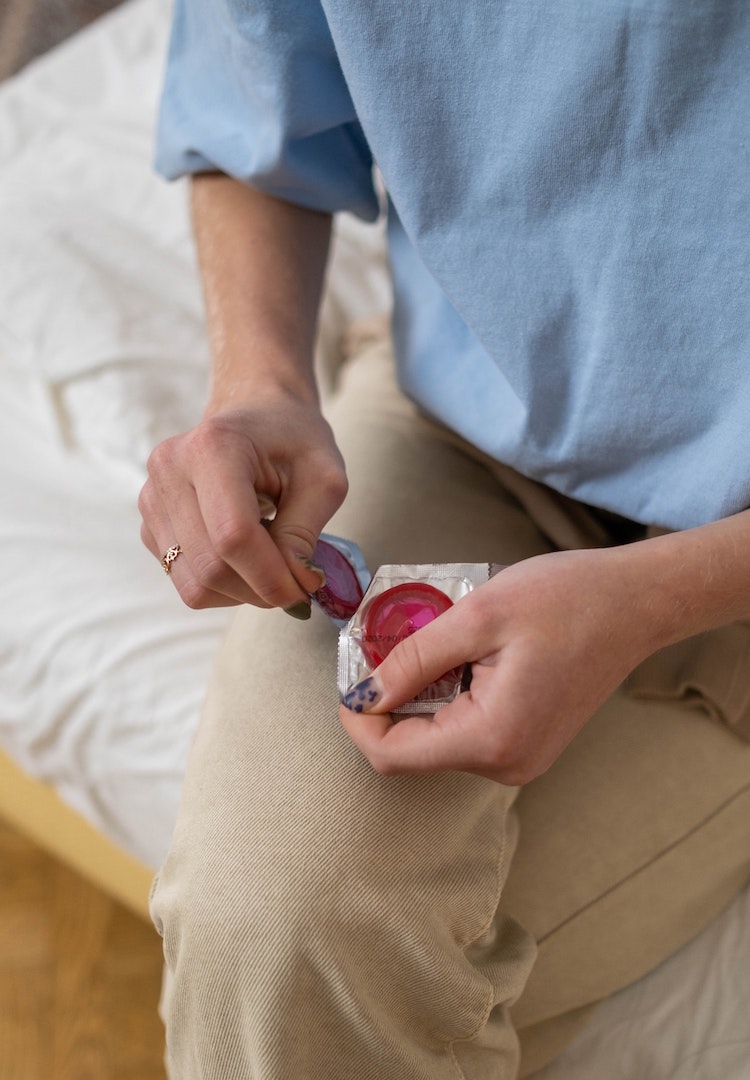Unpacking the myths and facts about thrush
image via @nicounderwear/instagram
Words by Alyssa Forato
All the info you never learnt in sex education.
Entering adulthood is daunting. There are so many things to learn and add to the routine: rent, bills, work and appointments. The list goes on. In the whirlwind of tasks that get heaped onto our plates, we’re bound to miss a thing or two. One important area of knowledge that women should be across – but often aren’t – is vaginal health.
It’s something that should be taught in schools, but unfortunately, it isn’t. My school’s sexual education preached that the best way to prevent pregnancy is to not have sex, and if you sleep with multiple people you’ll get an STI. Vaginal hygiene and preventing common infections didn’t appear in the curriculum.
Interested to hear how others navigate the world? Head to our Life section.
When I first heard of thrush, I had no clue what it was. I pictured a deadly rash that would be there for the rest of my life, ugly and incurable. Of course, I was wrong, but I didn’t know that. I was also unaware of how people got thrush, what it actually was and how to treat it.
Although I’m more across the sexual health and wellness topic today, I still have a long way to go. That’s why I spoke to Deborah Bateson, a Professor of Practice at the University of Sydney, to run me through what thrush is, how to treat it and some common myths.
Can you explain what vaginal thrush is?
Vaginal thrush is a very common infection… and it affects up to 75 per cent of women at some point in their lives. Basically, it’s caused by an overgrowth of yeast within the vagina. The important thing to be aware of is that the vagina is an ecosystem all of its own in a way. There are often small amounts of thrush, you know, just small numbers of yeast hanging around [in the vagina], not causing any problems. When there’s an overgrowth of those yeasts, that’s what causes the symptoms of thrush, and it’s really important for people to understand what’s normal and what’s not normal.
What are the symptoms of thrush?
Typical symptoms are a vaginal itch or discomfort. It’s often you have that thick, white, cottage cheese-like discharge, it’s quite distinctive… And sometimes people can get burning and pain when they’re urinating or having sex, but that could be a urinary tract infection. Sometimes, as well as having that discharge, some women can get enormous amounts of swelling and redness around the vaginal vulva… There are some treatments you can talk to your doctor about to manage those different symptoms… As doctors, we’re delighted when people come and talk to us about what’s worrying them and [we can] give them some advice [on how] to look after things in the long run.
Is thrush an STI?
No, it’s not a sexually transmitted infection. But if you have sex with a male partner when you’ve got thrush, they can get some symptoms. They may notice some redness, sometimes little red dots on the penis… If you’ve got thrush and your male partner has thrush, then they may benefit from some antifungal cream. But we don’t think it’s sexually transmitted.
Is there anything that causes women to get recurring thrush?
Recurring thrush occurs in about five per cent of women… The thing with recurrent thrush [is] it can be that you might not have just got rid of it completely in the first place. I think there are people… in pregnancy, but also people with diabetes, who can get that recurrent thrush. Sometimes there just doesn’t seem to be a reason for it, even though I see women who are doing all sorts of things to modify their lifestyle… I think the main thing to know is that… there is help at hand and not to stigmatise it.
What are the three biggest myths about thrush that people should know are false?
I think the first thing is… not all vaginal discharge is thrush. So, not to think that’s the only thing that can cause [concerning] discharge. Sometimes it may be a sexually transmitted infection, it may be bacterial vaginosis – that’s another common condition of the vagina. Another myth is that it is sexually transmitted. We know that the main cause of thrush is sometimes having hot, sweaty and moist skin after the gym or exercising. If you’re wearing tight-fitting lycra and non-breathing underwear, that can certainly promote thrush. As can sometimes wearing underwear at night, particularly if it’s not cotton, of course.
So again, these are causes of… thrush, that overgrowth of bacteria. Lots of friction sometimes after sex, sometimes taking certain antibiotics, being pregnant [and] women with diabetes have an increased chance of getting thrush and sometimes people with eczema… as well. It’s an uncomfortable condition, and it can be stigmatising as well. So I think a myth is that you just need to put up with it…
But there are lots of things you can do about it whether that’s self care by thinking about cotton underwear [or] not using vaginal products – the vagina cleans itself so you don’t need to use other cleaning things to look after the vagina. Sometimes using deodorants, panty liners or scented products can lead to thrush… So again, I would say beware of products that are sold over the counter that equalise the balance of the vagina because sometimes adding things into the vagina can lead to more problems.
And what are three facts about thrush that you think it’s important for people to know?
It’s a common infection and there are treatments available for it, that’s the first thing. I think the other fact about it is it’s important to be aware of the things that you can do to keep the vagina healthy. And that’s just looking after that part of the body and avoiding anything that’s going to cause exacerbation.
As I’ve mentioned, just simple things like changing after you’ve been to the gym out of hot, sweaty clothes and into loose-fitting clothes. The third factor is just knowing that there are treatments available, but don’t always just treat yourself. If things aren’t improving, you do need to go and see your doctor about it because it could be that there’s something else going on.
To read more about thrush, head here.










